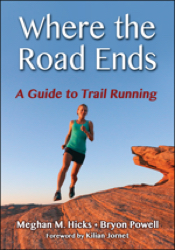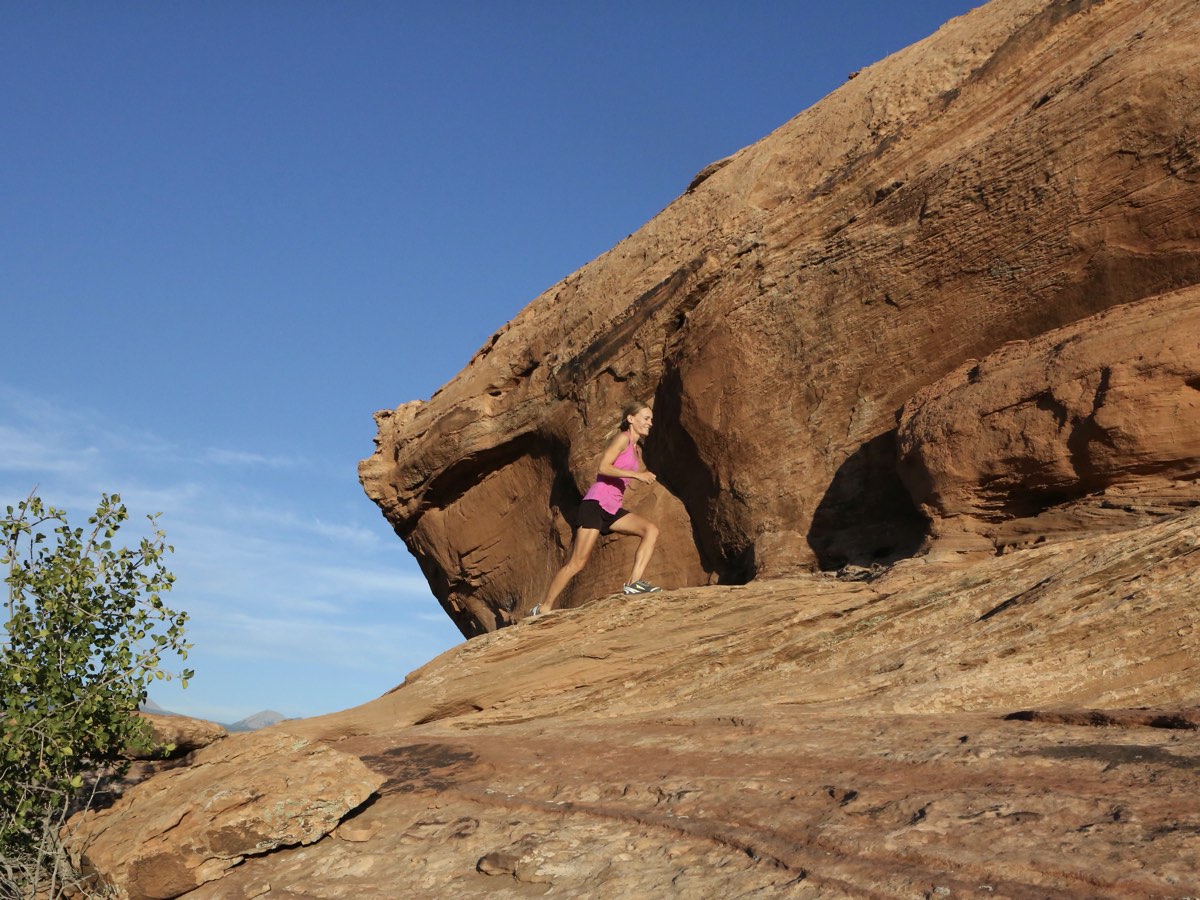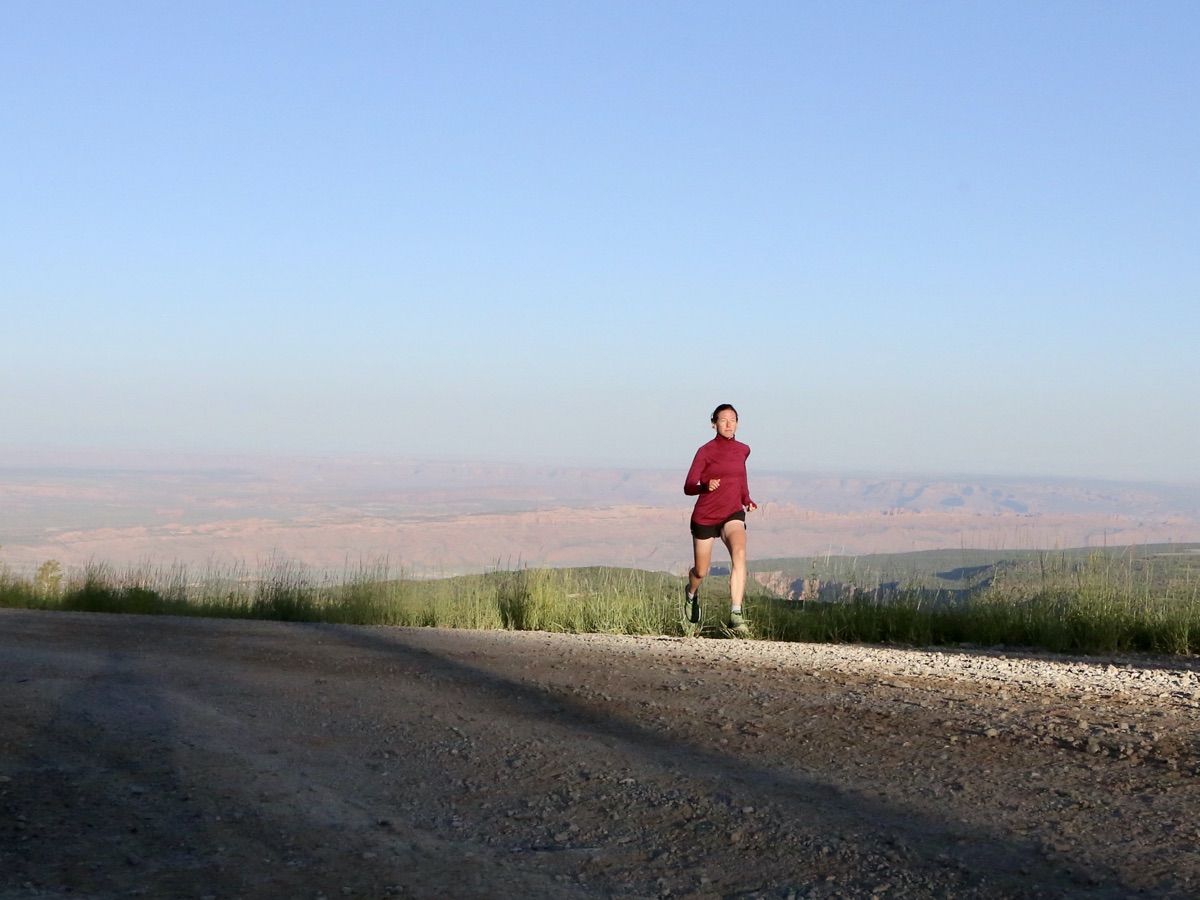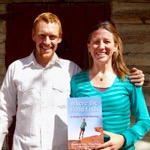
Like this article? Support iRunFar by purchasing our book “Where the Road Ends!”
Welcome to this month’s edition of “Where the Road Ends: A Guide to Trail Running!” That’s the name of both this column and the book Meghan Hicks and Bryon Powell of iRunFar published in 2016. The book Where the Road Ends: A Guide to Trail Running is a how-to guide for trail running. We worked with publisher Human Kinetics to develop a book offering the information anyone needs to get started, stay safe, and feel inspired with their trail running. The book Where the Road Ends teaches you how to negotiate technical trails, read a map, build your own training plan, understand the basics of what to drink and eat when you run, and so much more.
This column aims to do the same by publishing sections from the book as well as encouraging conversation in the comments section of each article. We want you to feel inspired and confident as you take on your first few trail runs as well as connected to iRunFar’s community of trail runners!
This month, we excerpt from Chapter 4 and offer an introduction to techniques for uphill trail running.
Tackling Short Uphills
When you encounter a short, steep hill, you’ll have to decide whether you want to run up it. If it’s particularly steep, slick, or a makeshift obstacle course, good sense might dictate making a quick hike of it. But your mental approach will often dictate whether you walk or run up such a climb. Stevie Kremer, the 2014 Sierre-Zinal champion, embraces a mix of running and hiking, or “riking” as she calls it. So when does Stevie rike? Her answer: “When my shuffle of a run is very slow and my breathing is very heavy and I see there is still quite a ways to go on a hill or when I notice people riking around me are passing me and breathing less heavily than me.”
Should you decide to walk up a steep slope, try hiking with small, frequent steps as opposed to taking monstrous strides outside your normal range of motion. On such climbs, trail runners have a tendency to bend too far over at the waist and hunch their torsos. This posture is counterproductive because it restricts airflow to your lungs. Bending forward when climbing is natural, but try to do so by leaning from your ankles. If you do bend farther than that, do so only slightly from the hips while keeping your torso straight, thereby maintaining your full lung capacity. On the steepest grades, some trail runners put their hands on their thighs and push down in sync with their footfalls. Says champion trail runner Kilian Jornet of his powerhiking, “I often go really low and push a lot with the hands on the legs to use all the upper body to climb. My back is low, but it’s straight and I can look in front.”
Jornet advises consciously switching climbing technique. “The more you use shorter steps with a higher cadence, the more you are working with your cardiovascular system. If you go with longer steps, you’re working with the strength of the muscles. So if you start to feel your muscles tire, you can reduce the length of the step and increase the frequency. Like this, you will rest the muscles a bit while keeping a fast speed. If you are struggling cardiovascularly, you can take longer steps and work more on the muscular side.”
Often times, running powerfully up a quick hill is more fun. To get started, speed up before you hit the climb to build momentum. After you start ascending, drive your legs and arms forward and upward with more power than normal. Work hard to carry the momentum you built heading into the hill. When running up a short hill, Kremer suggests, “take short, small steps, almost shuffles, while pumping the arms a lot. This is where a strong core and arms are important.”
Bad footing can slow your steep ascent. Try landing with your whole foot against the trail to maximize contact area. Also, look for little ledges with surer footing. These might come in the form of a root, rock, or a drier, flatter bit of trail. Multiple-time Skyrunning world champion Emelie Forsberg suggests, “when climbing on loose terrain find something that looks stuck in the ground and take normal steps but maybe with a bit more strength to keep the material planted in the ground.”
If obstacles are impeding your uphill progress, choose the line that reduces the need to take oversized steps. Land with your feet underneath your body to minimize the dangerous horizontal motion that can cause you to slip. Western States 100 podium finisher Dylan Bowman has this advice: “When running uphill on rocky sections of trail, it’s especially important not to get frustrated and to be as efficient as possible. Oftentimes, these trails steal our momentum or force us out of our rhythm. It’s easy to let this challenge affect our attitude, so the first step is to find the fun in the situation and embrace the circumstances underfoot. Though it may feel like a two-steps-forward, one-step-back scenario, chances are you’re moving better than you think. If the rocks are small and spaced out enough, I do my best to find patches of dirt or rocks solidly fixed in the trail to plant my foot. It may not work for more than a couple steps, but it keeps my mind engaged and my attitude positive. If the rocky footing is particularly loose, don’t be afraid to hike. It will be far more efficient and cost far less energy by the top of the hill.”
Staying Strong on the Longer Uphills
Long climbs, be they a few minutes or a few hours, require a different approach. In general, shoot to maintain an even effort throughout and on par with your sustained effort on flat terrain. You want to run at the same effort at the top as you do at the bottom, as well as minimize the frequency and duration of spikes in effort along the way. Pushing too hard on climbs risks making the remainder of your run a less enjoyable slog. By nature, your pace will be slower when climbing than when running the flats. This disparity is a completely normal part of trail running.
On shallower grades that are generally runnable, keep your effort such that you can keep running them. Staying efficient can help with this. Whereas a short, steep climb requires you to pump your arms, you can relax your shoulders and arms on longer climbs. Likewise, you don’t need to drive your legs forward as you do on those quick bumps up. Instead, focus on maintaining the same cadence you run with on the flats while keeping your stride to a length that yields a sustainable effort. Your stride length on a sustained, runnable climb could be up to one-third shorter than the stride length you use when running at the same effort on the flats. The slower pace of a climb and the upward pitch of the hill mean that your gaze can be a bit closer to your feet than it is on even ground. On the other hand, the slower pace also means that when you perceive some smooth trail ahead, you’ve got a bit more time to take in your surroundings.
You’ll have even more time to take in the sights if a longer climb requires walking! As you experiment, you’ll find that you’ll have particular grades at which you walk faster than you run given the same effort. For hills that require stretches of walking that last minutes at a time, focus on keeping your torso lengthened and avoid bending over too much from the hips so that you keep your lungs open.
Over time and with practice, you’ll build a sense of which combinations of grade and duration call for you to walk and which don’t. Many times, a climb of even just a few minutes calls for a mixture of walking and running. In such cases, work on smoothly transitioning between the two, carrying some of your momentum from running into walking and easing back into running. As you perfect these transitions, you may switch from one form of locomotion to the other for stretches as short as five or six strides. Brandy Erholtz, a U.S. Mountain Running champion, still works on finding the right balance. “I used to think if I could run, I should. However, there have been many races in which ’powerhikers’ have passed me. So, I’ve been working on my powerhiking when training on steep terrain and have actually found it to be more efficient at times. It also allows me to make bigger strides with a lower heart rate. I think this takes practice and experimentation.”
Of course, sometimes you won’t want to think about the length of a hill. Erholtz tries not to. Instead, she thinks, “for sure, I can get to the next tree.” Then, when she’s at that tree, she thinks, “I can make it to the next rock.”
So, want to get your heart pumping? Then head out to run and powerhike uphill on trails! Uphill travel is challenging, of course, but oh the places it’ll take you.
Excerpted from Where the Road Ends: A Guide to Trail Running, by Meghan Hicks and Bryon Powell. Human Kinetics © 2016.
Call for Comments
- Do you have additional tips for running and hiking up short and long hills?
- Do you often find yourself wondering when to walk versus run on an uphill? How do you decide? Has this decision-making process changed as you’ve developed as a runner?
- Do you have advice for others who are getting starting with uphill trail running? Something you wish you knew earlier?


